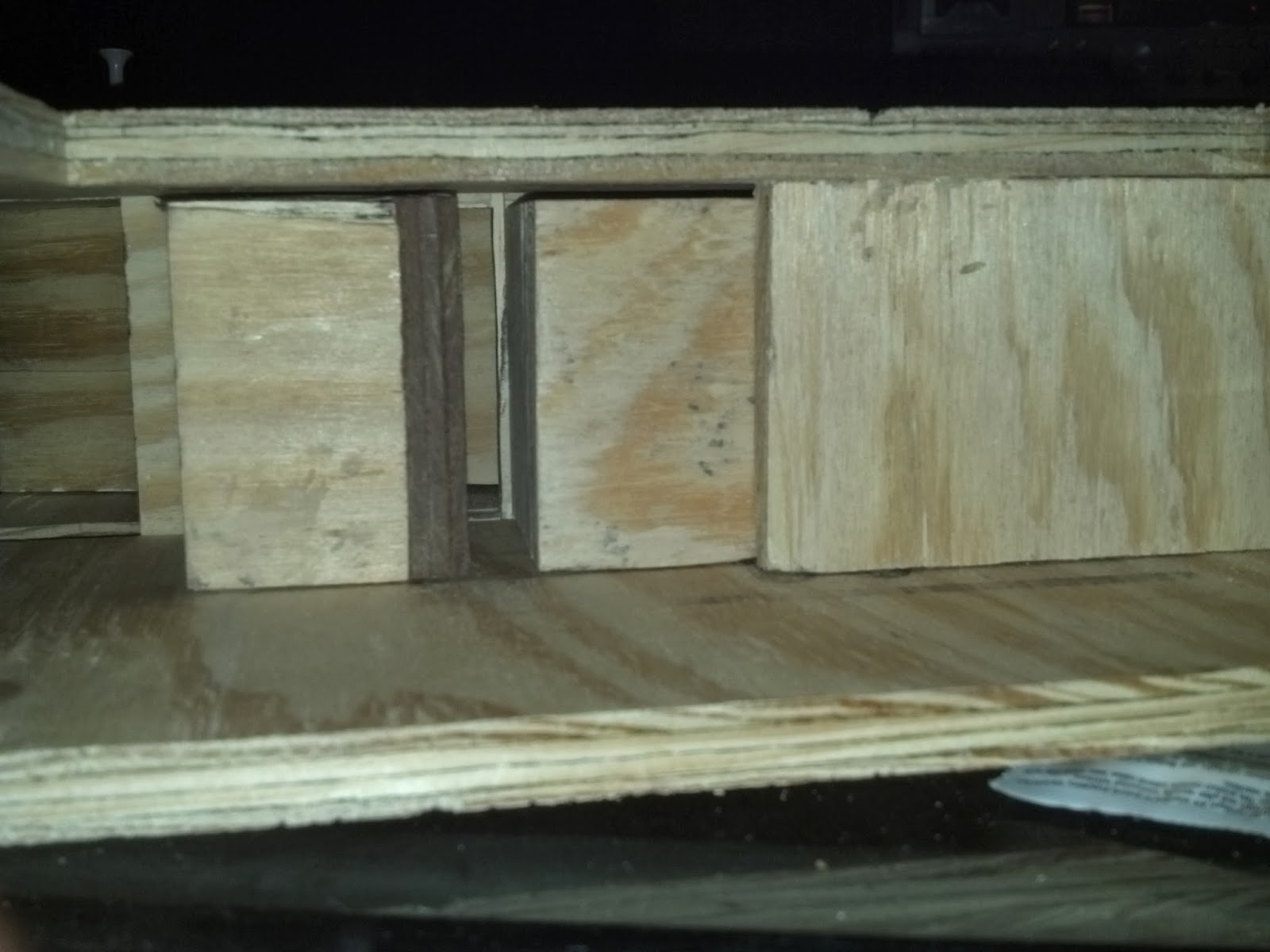The inside cross-section of the finished chutes was about 1/4" too small on all sides, which meant condom packages had to be either jammed into the chutes, or trimmed to an unrealistic size. Without the proper tools for sheet metal manufacture at my house, I realized that I'd be unable to fix this problem until returning to RPI's facilities.
During my meeting with Professor Walczyk and David Banks last semester, Walczyk pointed out that a simpler design to use is the "drawer feed" device, which is widely used and proven throughout industry. By reducing the concept of a condom vending machine to the problem of moving a small object from point A to point B, we can make use of proven inventory feed methods from industrial engineering.
Given that production issues were showing the current prototype to be difficult to work on in a low-tech environment, and that I was left with nothing to do for a month, I threw some sketches of different designs together. I decided to also make use of this opportunity to try building a model from whatever I could find on hand, with only whatever tools could be found in a rudimentary shop, or a typical engineer's basement.
The original drawings were done on the back of a US Airways courtesy card, I'll have to upload a picture as soon as I find them again.
The images you see below are from a model I built last weekend, quite literally, in a typical engineer's basement. Raw materials included 8 square feet of 1/2" plywood, a few handfuls of 2" wood screws, and a few scraps of 1/4" plywood and duct tape. Multiple copies of the model seen can be cut from a single (in the U.S., 4ft x 8ft) sheet of plywood, which is a typical building material across the globe. The only tools I used, in keeping with the idea of simplicity and third-world production potential, were a jigsaw, table saw, and handheld drill/driver.
 |
| Front panel removed |
 |
| agitator up, able to load, unable to vend -- note interference lockout |
 |
| agitator down, unable to load, able to vend. note no lockout, plywood is raised out of slot. |
 |
| Front view |
 |
| Inventory in the hopper. Note that agitation has stacked it all near the vending slot, and how the narrow width prevents condoms from turning sideways in the hopper. |
As you can see in the partially assembled "cross-section" views, the device contains a large hopper, which is slightly wider than a condom. This hopper leads to a slot, and can be agitated freely using the agitation handle, which currently resembles a screw. By allowing the hopper's internal geometry to be shaken, condoms can be persuaded easily to slide into the needed slot, form orderly stacks, and unjam, all without tedious arrangement of inventory or complex mechanisms. Once the customer observes that a condom has fallen into the slot, through a small window in the front of the device: (In the actual production model, this would be a plexiglass window or a small hole, too small to remove a condom through. At this point, the customer still hasn't payed).
 |
| Not ready, keep agitating |
 |
| Take me home! |
he then inserts coins into a washing-machine-like coin mechanism. These look like this:
On the device, this would go on the long handle-like paddle component. The coin device bolts to a stationary case, and provides a few inches of forward push near the mounting point -- in this case, sliding the slot-containing paddle-handle-thing forward, and allowing the condom to fall off the shelf, and into the waiting customer's pockets.
 |
| Slot-containing-paddle-handle-thing. Coin mech plunges in from far right edge. |
 | |
| paddle-thing, retracted, loading inventory. Note the shelf and lack of access from underneath |
 |
| paddle-thing, extended during vending, from below. Note the slot has moved past the shelf. |
This two-step vending process isn't terribly complex, and makes quite a bit of sense when indicated with large numbers drawn onto the device's case. By waiting until the condom is definitely ready to vend before accepting the customer's money, the device guarantees a 100% success rate of currency-to-condom conversion.
I'm still encountering only one major problem. The major one I've found is that the device sometimes vends two condoms instead of one. I've never observed three or more, nor have I seen the device jam and attempt to vend 1 1/2. I've tweaked the size of the slot, and attempted a few other fixes, but it seems to be far easier to get a condom to slip into the vending slot (requiring 2 agitations average) with this configuration than with any other (closest being with a slightly narrower slot, but this requires usually five or six cycles of the inventory agitator, by which point the customer's typically given up and moved on). My recommended solution is to ignore the problem, and simply take into account the average number of condoms vended each time when calculating the cost to charge per condom, I doubt the second inventory will go to waste if the first doesn't.
I'll be presenting my work in person this week, and hopefully I can find a working coin mechanism to install on this new prototype as well. From there, if all goes well and no issues appear, I'll be compiling the blueprints for this design and putting everything together that would be needed to produce these devices.
